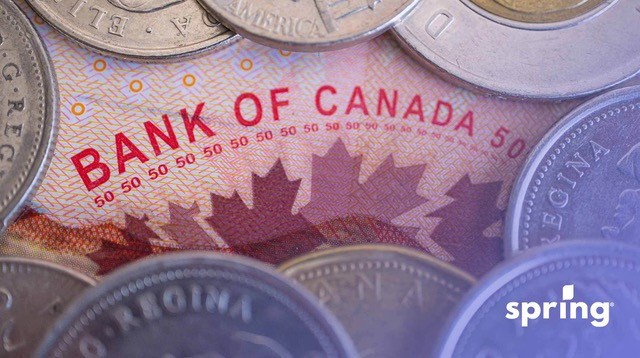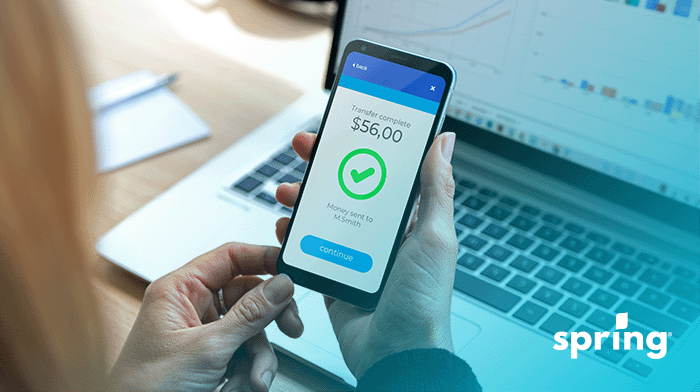In fact, consumer credit debt in Canada is an eye-popping $662 billion, which clearly indicates we are reaching for our plastic more than ever. That’s to be expected considering how much of our daily lives are moving online, from Amazon shopping to food delivery apps to rideshare. It seems everywhere we turn, the convenience of paying online with a credit card is tempting us to swipe, tap, and worry about it later. These several factors can cause debt to creep up on us.
To battle that bulging credit balance, one method is using a balance transfer credit card, which is a way to reduce credit card deficits via a more favourable interest rate during a promotional window. But using this method requires careful consideration, so let us guide you through how to take advantage of a balance transfer credit card.
How Balance Transfer Credit Cards Work
Yes, balance transfers are exactly what they sound like – you transfer balances from one credit card to another. Why would you do what appears to be a lateral move of paying off one credit card (or multiple cards) with another? Because while most credit cards command an interest rate of around 20%, balance transfer credit cards offer a much lower rate, sometimes even as low as 0% for a limited time.
If you are carrying debt on one or multiple high-interest credit cards, a balance transfer card
is definitely a solution to explore. More of your monthly payments can go to attacking the principal balance and less to servicing accruing interest.
What You Need To Know
It may sound strange, but that credit card balance you’re carrying is something coveted by banks and financial institutions. They want your debt because it’s an opportunity to charge you interest on your balance. You can look at this as an advantage when shopping for a balance transfer credit card.
Be sure to compare the various promotions offered, like low interest rates, the duration for how long the low rate is offered and if no annual fee is possible. Don’t just immediately go for the lowest rate, though. Check the duration of the rate and consider how long you need to pay down your debt.
It’s also important to keep in mind your available credit limit, which could be increased. This would allow you to improve your credit score as well as save money. This is because the credit check could allow your card issuer to increase your limit to beyond your transfer amount.
Window Of Time For Balance Transfers
Some balance transfer credit cards offer extra benefits, such as fraud protection, rewards and discounts on travel services. However, perhaps the most crucial element of a balance transfer credit card is the time window for which you are offered a low interest rate. Credit card companies hope you keep using the card after the low-interest promotional period ends. As we said, your debt is valuable to them.
Most balance transfer credit cards offer a low single-digit or zero percent interest rate for the first six months, and then the “real” rate kicks in. This is key: if you’re going to move your balance, you have to be prepared to pay down your debt in a fairly quick amount of time. Because once that promo rate expires, you’re right back to servicing the debt at a double-digit rate similar to what you’re already paying.
Here’s a quick calculation: You have a $5,000 debt, and the balance transfer card offers 1.9% for six months. That means you will pay $8 in interest per month ($95/12). To pay off this debt in six months, your monthly payments will be $841 ($833 + $8).
A good strategy for choosing a balance transfer credit card is to consider if the regular rate after the promo ends is lower than what you’re paying now. If so, then you’re winning either way. You get the super-low rate for six months or more, and then a lower regular rate to what you’re paying now.
Balance Transfer Fees
When shopping for your debt, be prepared for the possibility of balance transfer fees. This is when a financial institution charges you a fee for moving your debt onto their low-interest credit card. This fee is often expressed in a percentage, usually around 1% to 3% of the balance you’re moving. For example, if you’re moving $10,000 to a balance transfer credit card, you could be paying up to $300 for the privilege. Not all companies do this, but those who do might try to bury it in the fine print.
Best Practices With Balance Transfer Credit Cards
If you’re serious about getting out of debt, then you can’t use your new balance transfer card the same way you did with your old one. When you use the new card, not only are you racking up new debt, but new purchases are charged the regular interest rate, not the promo rate. Furthermore, your payments are going to the low-interest balance first, while new purchases sit there longer, getting dinged with the higher interest rate.
The best practice for thriving with a balance transfer credit card is to leave it at home or use it very sparingly. This needs to be your priority until you’ve paid off the balance you transferred. Remember, if you’re serious about getting out of debt, you need to capitalize on that short window of low promotional interest. Because once the higher rate kicks in, you’re back to wrestling the alligator.

Transferring Your Credit Card Balance
If you only have a short window of time with low promotional interest rates and transfer fees, you need to act fast. You should plan to pay off most (if not all) of your debts by the time the promotion ends. The first step in transferring your balances is to log a balance transfer request with the new credit card company unless you transfer amounts with the same issuer. You can do this over the phone or online. You need to provide the following:
- account numbers of your old card
- amounts that you want to transfer
Once you transfer funds, debt repayment on the transferred debt should begin immediately. Ideally, you want to choose a balance transfer option that allows you to comfortably pay most of your existing debt by the time the promotional rate and promotional period ends. Taking advantage of this introductory period can potentially save you a substantial amount and pad your chequing account.
Bad Credit Balance Transfer Cards
Unfortunately, it can be difficult to get approved for a balance transfer credit card if you have less-than-fair credit. But bad credit doesn’t have to stay bad for long. Follow our tips on how you can improve your credit score, and you might qualify for a balance transfer credit card sooner than you think. And when that time comes, the Scotiabank Value® Visa Card is a good place to start. With its low annual fee and 0.99% balance transfer interest rate for the first 6 months, it’s an ideal card to kick off your debt reduction strategy.
How Balance Transfers Affect Your Credit Score
If you get approved for a balance transfer card, your credit score may get dinged in the short term. If you understand the components that affect your credit score, you’ll know that new credit accounts lower your average account age and suggest financial trouble. However, this is also noticed on your credit report and only makes a small impact on your score.
But credit scores bounce back and then some! Paying off debt is a huge factor that will ultimately boost your credit score in the long run. Just make sure you make all payments on time!
Most Popular Balance Transfer Offers
When you’re in the market for a balance transfer card, it’s a good idea to pay attention to the promotional offers. It’s also important to remember that once the promotional offer expires, you’re going to have to pay the regular interest rate. You want to take advantage of less interest, no matter the dollar amount you’re transferring.
In Canada, many banks and credit card companies offer balance transfers. However, some of these offers are better than others. Because there are so many different options out there, you really need to pay attention to the introductory rate, introductory APR, and the variable APR. Here are a few.
MBNA
MBNA offers two different balance transfer credit cards. They have the True Line Mastercard and the True Line Gold Mastercard. The application process for each is the same but each will fit your financial needs differently. Let’s take a look at both.
MBNA True Line Mastercard
This credit card comes with an awesome welcome offer. You can get 0% interest on balance transfers for the first 12 months as long as it’s completed within 90 days of account opening. After that, there’s no annual fee, 12.99% on purchases, 17.99% on balance transfers and 24.99% on cash advances.
MBNA True Line Gold Mastercard
The MBNA True Line Gold Mastercard doesn’t have a 0% welcome offer, but it has lower interest rates. You can get 10.99% on purchases, 13.99% on balance transfers and 24.99% on cash advances. The annual fee on this card is only $39.
BMO
Another company that has a great balance transfer offer is BMO. One of the cards they offer this with is the BMO Preferred Rate Mastercard. If you get approved you can get 0.99% on all balance transfers for the first 9 months. There’s only a 2% transfer fee, and the annual fee of $29 is waived for the first year. Your purchase interest rate is 13.99%, while the cash advance rate is 15.99%.
Alternatives To Balance Transfer Credit Cards
Balance transfer credit cards are just one of the debt relief options available to you. There are other ways that you can tackle your debt and reduce your interest rates. All of these options allow you to reduce your minimum payments, get rid of high-interest debt, and reduce your total outstanding debt.
Debt Consolidation Loans
One of the most common ways to reduce your debt is with a consolidation loan. For credit card debt, this structures your payments and reduces your interest, making it simpler to pay off. This is also a good option if you have a lot of debt. You can combine all of your debt into one monthly payment with only one interest rate. You’ll have lower interest charges, lower interest payments, and be able to pay off your debt faster.
Debt Pay-Off Plans
If you want to avoid taking on any more debt in order to pay-off what you have, then a debt payoff plan may be the way to go. If you choose to do this though then budgeting is the key. The more disposable income you have, the faster you can pay off your debt.
How you choose to structure this debt payment plan is up to you. Some choose to tackle the debt with the higher interest first, while others choose to start with the smaller balances and work their way up. Either way, making payments as fast as you can is the simplest way to reduce your interest and pay off your debt.
Credit Counselling Services
If your debt is becoming too overwhelming, then it might be time to see a credit counsellor or a licensed insolvency trustee. They can help you work with your creditors to reduce your overall payments and make your debt more affordable. It’s relatively inexpensive and can end up saving you a lot of money. However, it will harm your credit score. That said, they can work with collections and other creditors to help manage your debt.
If a consumer proposal isn’t a good option for you, then you may want to consider bankruptcy. Before you choose bankruptcy, though, you want to be sure you qualify and know how bankruptcy will affect you. It will also harm your credit score, which can make rebuilding it pretty difficult.
Final Thoughts
If you have a high interest rate or even a high balance on your credit card, a balance transfer card can reduce the interest rate you pay while you pay that card off. It can also allow you to pay reduced interest on any purchases you make in the future. Plus, if you go with a promotional balance transfer offer, you can potentially pay off your debt with no interest to pay all of it. Or, at the very least, a small portion of the amount you would have to pay.








